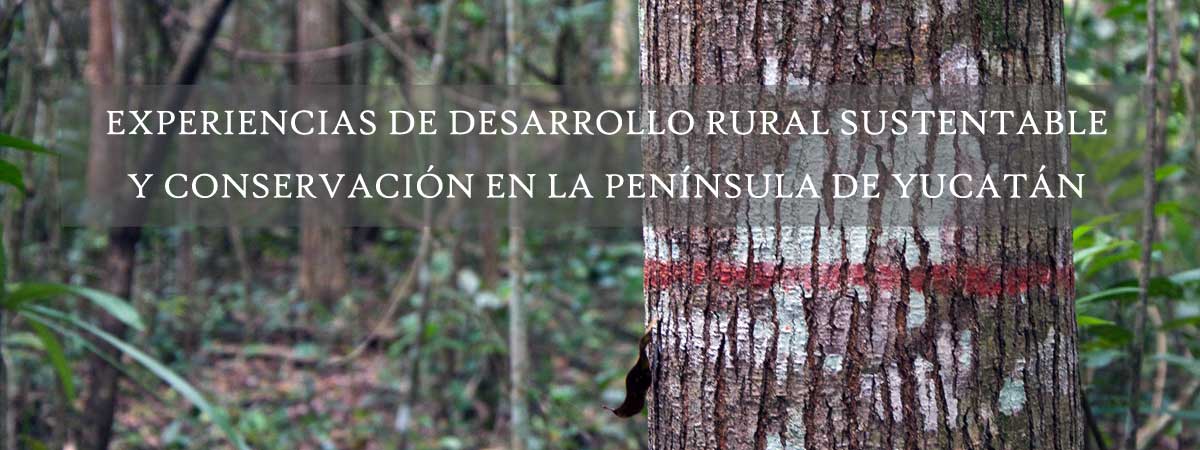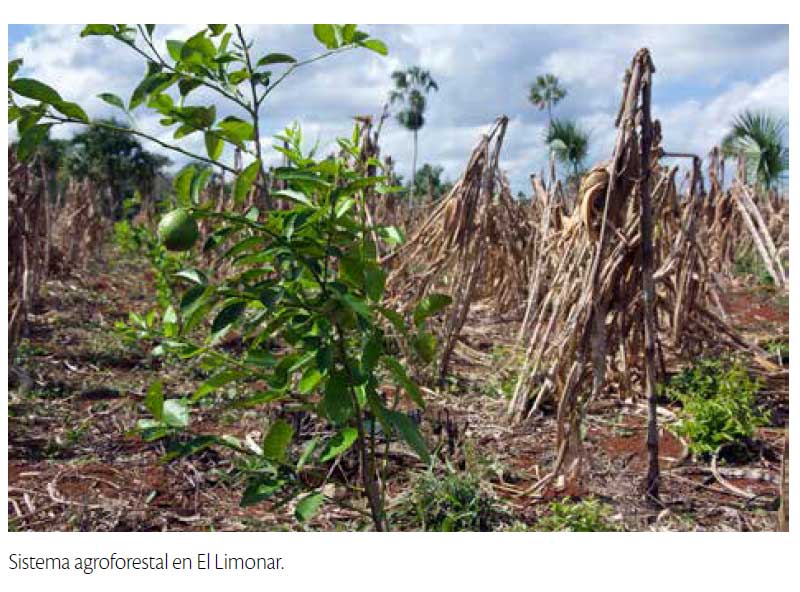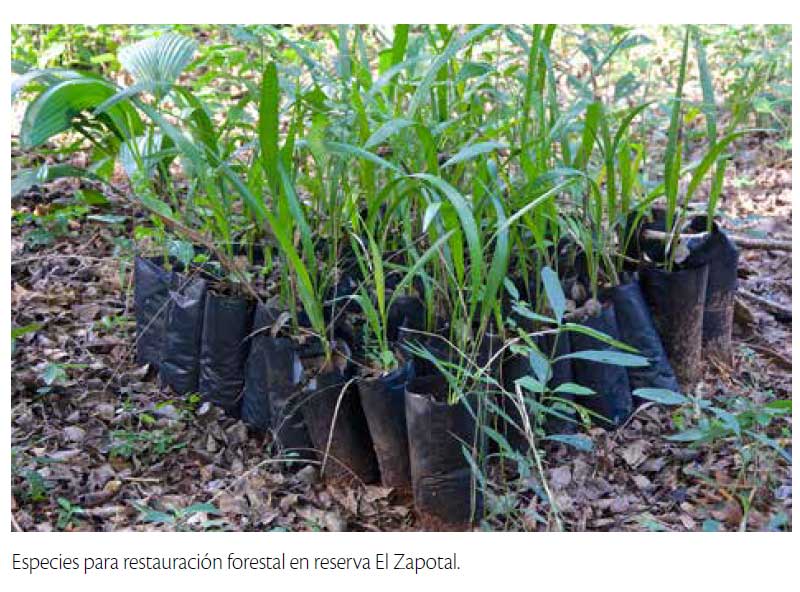Agroforestry modules and ecological restoration in El Zapotal Reserve

Pronatura has also developed academic research activities, including studies of flora in collaborationwith CICY, bird monitoring, and study of the jaguar population with the Institute of Ecology of UNAM. The analyzed surface was not limited to the polygon of the reserve, but covered some 52,000 hectares in conjunction with neighboring ejidos. Pronatura is the provider of technical services for several ejidos in the area of influence on issues such as PES, reforestation, sustainable rural development and forest fire prevention. From the year 2013, together with CONAFOR, Pronatura started a restoration project of the forest landscape in the reserve, and in the context of the REDD+ initiative it incorporated an agroforestry project in the ejido El Limonar, adjacent to the reserve. Together, these activities aim to restore the original landscape within the reserve and promote productive management with the incorporation of trees in the buffer zone outside the polygon of the reserve. Leyla Ucán Dzul, president of the ejido El Limonar, community adjacent to the reserve, tells that their parents and grandparents worked the land for two years, then the ground began to produce less and they went on to other lands, and then they had to cut down the forest. Because the area around El Limonar had suffered a fire shortly before Leyla came to this land, she began her milpa in a new way: an agroforestry system that until now has not stopped producing. When visiting her fields it is possible to see lines of maize and beans interspersed with coconut palms, lemon, orange trees and forest species such as ramón, huaxín, ciricote, tzalam and chacah. "Eventually we'll have to adapt other crops", says Daniel Jiménez, head of the restoration and sustainable rural development program at Pronatura, "as the trees grow and probably the maize will not have the same yields due to shading". By then, citrus will be in full production, the huaxín will be good for cutting and livestock feed, the ramón will have lots of timber and non-timber uses, and the chacah hedges could be used as tutors for pitahaya. These resources combined can provide a profitable system, and El Limonar is already a success in agroforestry.
A few meters from the village of El Limonar it is possible to see a secondary forest of about 20 years, and pushing through the mountain it is possible to enter the area of El Zapotal reserve. Once inside, it is hard to imagine that the landscape was a cattle pasture about 10 years ago. Today it is a secondary forest that has had a quick recovery thanks to the intervention of the program with fire-cutting gaps, reforestation and management of acahuales. Thus, the restoration within the reserve, and the implementation of agroforestry systems in its area of influence, starts to move towards recovery of a landscape as close to the original as possible. Early in the process of reforestation in 2008, the plants did not have good survival rates. It was considered to be due to the drought that year; and also because the trees were provided from the CONAFOR germplasm nurseries, which were not well-suited to the area. Support for a network of community nurseries was proposed, and once the work with local nurseries began, successful seedling survival increased. The work of the nurseries is strengthened inside El Zapotal with a collection of live plants from the gene bank with a hundred native species of traditional, cultural and timber importance, whose funds were provided by CICY and UNDP. An important moment of the restoration project was in 2013, when it gained access to the PES program in the ejidos where there was CONAFOR presence, as this allowed to cover operating costs, increased surveillance of planted trees, fencing of areas that may be susceptible to livestock grazing, opening of fire-cutting gaps and biological monitoring.
Another important project in the restoration area is the management of acahuales with productive reforestation. This project began in December 2014, as part of the REDD+ vision, in order to accelerate the process of ecological succession in 10 hectares of secondary forest. Considering all the components of the restoration program within the reserve and neighboring ejidos, already 1,800 hectares have been planted with around two million trees. Malaquías May Balam is operating assistant of the restoration and sustainable rural development program, and according to his perception producers are very satisfied with the restoration, they can see the results because many wild animals have returned, and economically they are having better results with beekeeping. For Daniel, hiring Malaquías was key because he is from the region and speaks Mayan, which has facilitated communication between Pronatura and local communities. "As an idealistic biologist, Daniel recalls, one wants the animals preserved and that the forest is as it should be, but it is very difficult to tell people not to cut the forest if their soil is not productive. It is essential to provide productive alternatives, both for self-consumption and marketing, and it becomes essential when you think about the sustainability of the project. If the project lacks funding, productive activities must continue". According to Daniel, in 2014 the agroforestry system was implemented in El Limonar and had a yield of 6 tons of maize; this year it is expected that citrus fruits like lemons and oranges will have produce in order to continue using the area. Isaías Cupul Dzul, dweller of ejido El Limonar and agroforestry module project beneficiary, says that "when we work we are always with the view that it is something that benefits us, but it is also a hope for the future. That's what gives us the courage to work, not just seeing it right now, but looking beyond". Also, in the context of the Network of Private and Social Reserves of the Yucatan Peninsula, one of the core initiatives of the Itzincab Alliance, the El Zapotal Reserve poses a successful model of forest restoration in an area for perpetual conservation, accompanied by a strategy of improved production practices in the ejidos of the area of influence of the reserve. This "dual strategy" of impact is critical to ensure proper land management in the area, as well as the sustainability of conservation actions and production; not to mention that the involvement of neighboring populations to the reserves increases the sense of identity, appropriation and culture of caring in the area. |





















